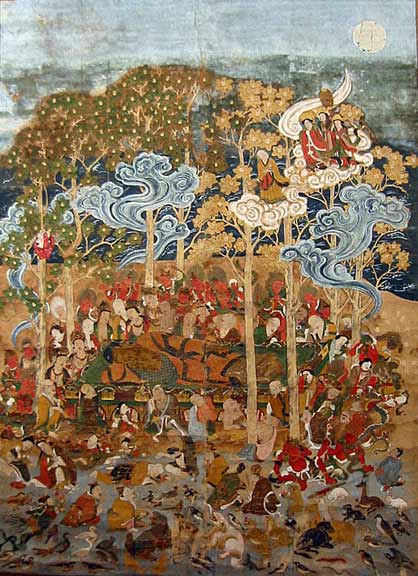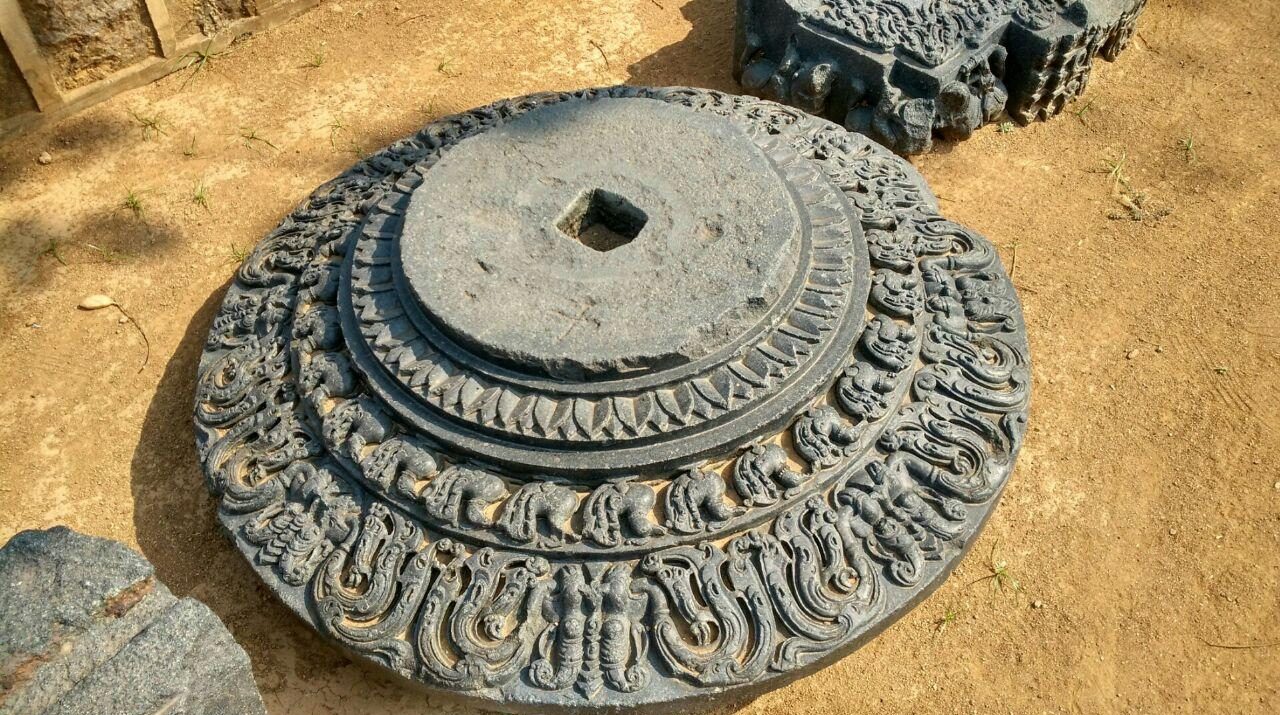The word parinirvana refers to death which happens to the body of a person after attaining nirvana; a release from samsara , the cycles of birth and death and rebirth. This is different from an ordinary person dying, as per Buddhism.An ordinary person is reborn due to unresolved karma which passes on to a new birth.
The pariniravana of the Buddha is mentioned and described in Buddhist literature. The parinirbanna-sutta is an important source in this regard. According to this source of the Pali canon the Buddha around the age of eighty declared he would soon reach parinirvana , the final deathless state. He had his last meal which was an offering from Cunda, a blacksmith. He fell violently ill after this and left his earthly body. The place is believed to be Kushinara or Kushinagar, (east of Gorakhpur in present day Uttar Pradesh) India, in abandoned jungles of the Malla kingdom. His disciple Ananda was against him achieving this state in the jungles. He also explained to Ananda that the meal had nothing to with his death, in fact it was a great meal as it was the last meal of a buddha or enlightened one. Before entering pariniravana he asked all the bhikkhus or monks to clear any doubts or questions they had. His final words were ” ..all composite things are perishable… strive for your own liberation with diligence..”After this he passed away into parinirvana. The Buddha had told his disciples to follow no leader. Mahakasyapa was made the chairman of the First Buddhist Council. His body was cremated and his relics were divided between eight royal families and his disciples. Much later Emperor Ashoka enshrined them in stupas. He built a stupa and made a pilgrimage site in Kushinara, the Gupta kings (4th to 7th century) further developing the site. Kushinara had remained under the Mauryas, Shungas, Kushanas, Guptas and Harsha dynasties.The site had been abandoned around 1200 A.D due to invasions. It continues as an important pilgrimage site for Buddhism, following its rediscovery by British archaeologists in late 19th century.

Pariniravana,schist, 2nd-3rd century,Gandhara.
© Marie-Lan Nguyen / Wikimedia Commons, via Wikimedia Commons
Paranirvana, 2nd-3rd century,Gandhara.
Volné dílo, https://commons.wikimedia.org/w/index.php?curid=3244686

Pariniravana, painting, Astasahasrika Prajnaparamita Sutra, 700-1100,Nalanda, Bihar.
By Asia Society created the file. Artwork created by an anonymous ancient source. [Public domain], via Wikimedia Commons

Parinirvana,painting, Wat Tha Thanon,Thailand.
By ผู้สร้างสรรค์ผลงาน/ส่งข้อมูลเก็บในคลังข้อมูลเสรีวิกิมีเดียคอมมอนส์ – เทวประภาส มากคล้าย (Own work) [CC BY 3.0 (http://creativecommons.org/licenses/by/3.0)%5D, via Wikimedia Commons

Buddha, Gal Vihara,12th century,Sri Lanka.
By Jerzy Strzelecki (Own work) [GFDL (http://www.gnu.org/copyleft/fdl.html) or CC BY 3.0 (http://creativecommons.org/licenses/by/3.0)%5D, via Wikimedia Commons

Buddha image,Mahapariniravana temple, Kushinagar.
By myself – Own work, CC BY-SA 2.5, https://commons.wikimedia.org/w/index.php?curid=1766418
The painting below depicts the Buddha transitioning to parinirvana. Buddha is in a forest with Sala trees and surrounded by mourning animals, gods, demons, and human beings.

‘Nehan-zu’/Parinirvana,painting,1867.
Offentleg eigedom, https://commons.wikimedia.org/w/index.php?curid=628097
References :
- wikipedia.org
- Fisher,Robert E./Buddhist art and architecture,London : Thames and Hudson,1993.
Posted by :
Soma Ghosh
© author

